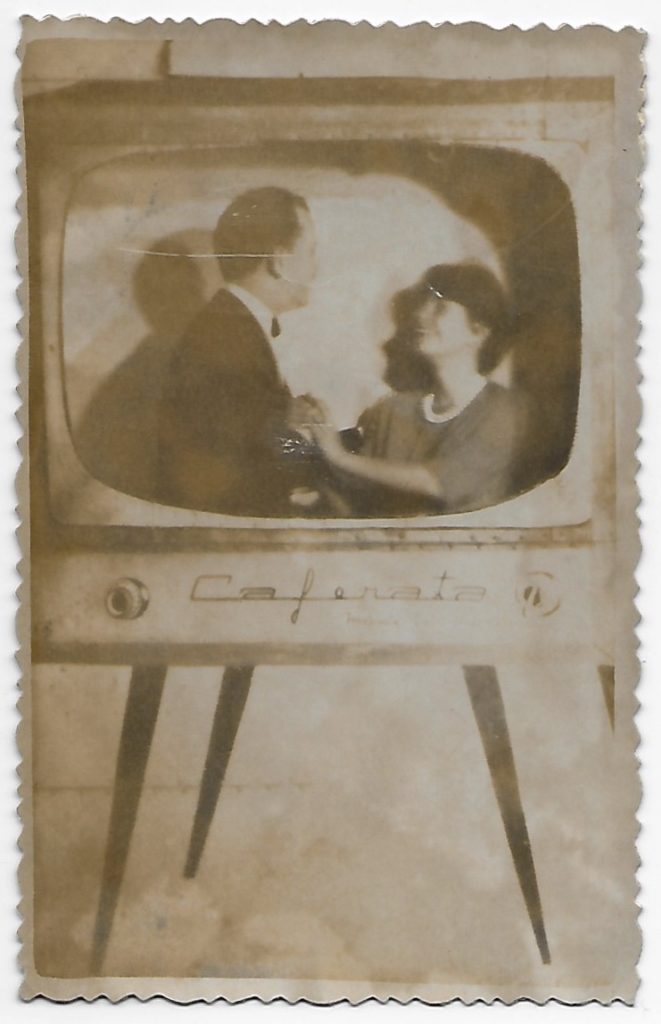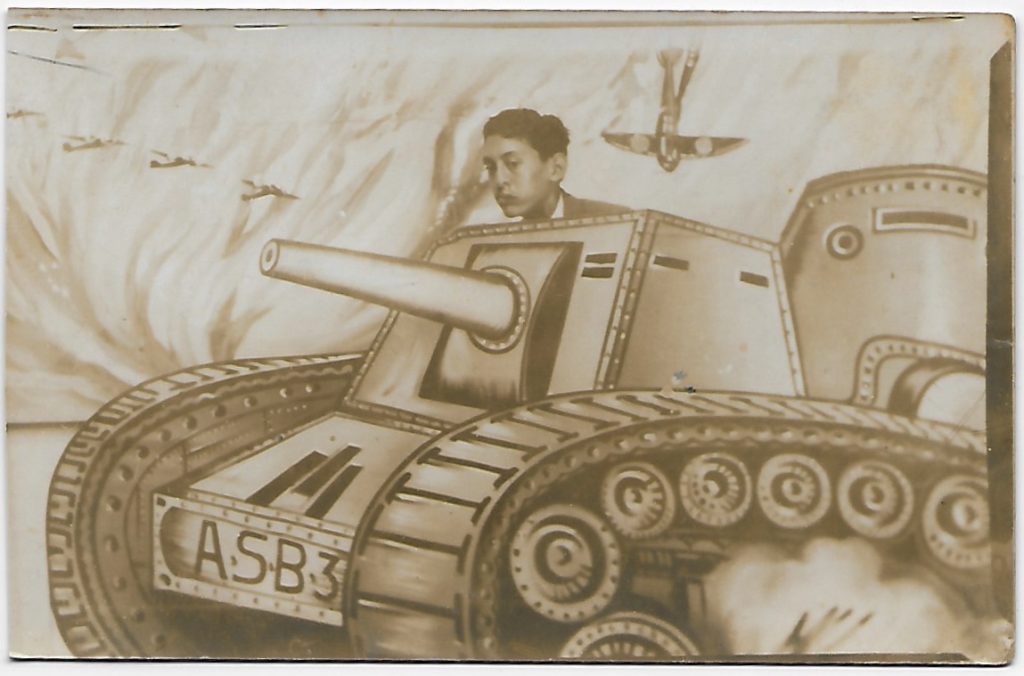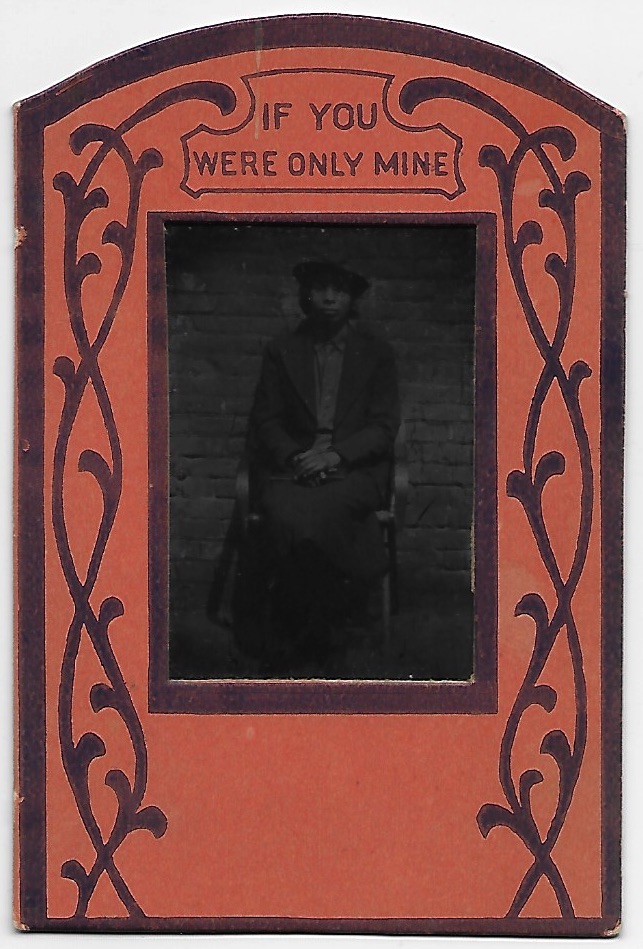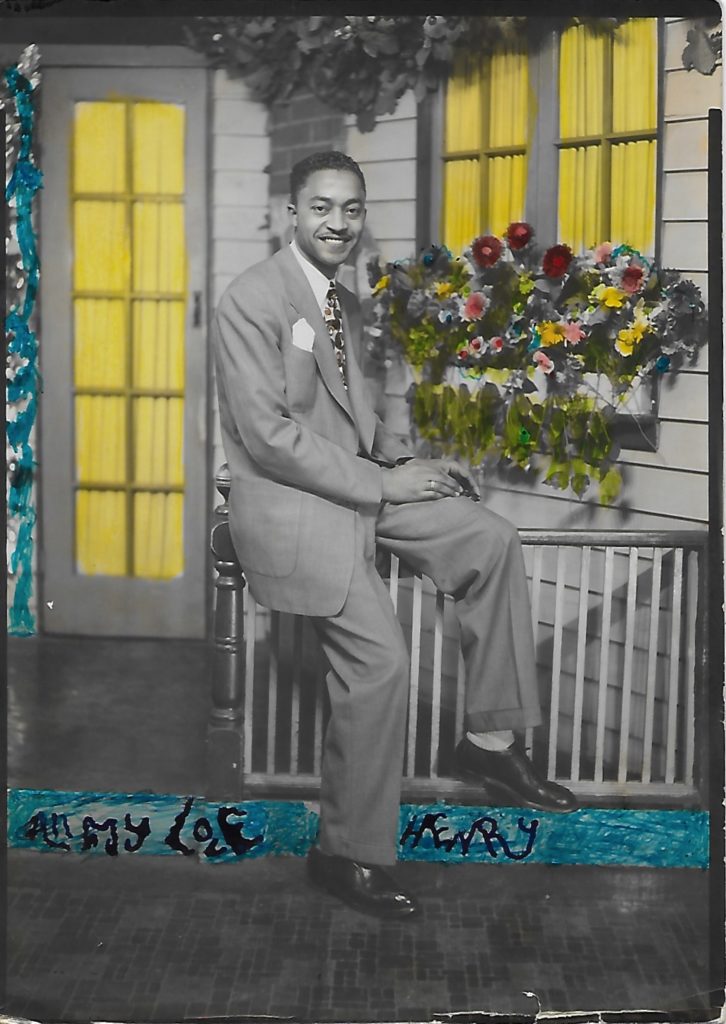In his new biweekly column, Pinakothek, Luc Sante excavates and examines miscellaneous visual strata of the past.
People visited the arcade to stage a play for themselves and a select audience of their family and friends. The photographer supplied flats and props and the shallow space between them, and the subjects reserved the option of creating a performance in that setting. Most people did no such thing, of course, but just sat there like stumps, overwhelmed and maybe intimidated by the lights, the camera, the photographer who in those circumstances was likely to be a seasoned carny. The photographer might be spieling at them, three hundred words a minute, while the pikers would be struggling to follow along, finally giving in to whatever that last thing he said was. Which usually meant stuffing an extended family into a prop canoe or charabanc, snap, snap, and outta there. The ideal way to treat drunks was to stick their heads in those holes—in boards that supplied the rest of their pictured body: boxer, beauty queen, infant—effectively immobilizing them.
Performance was understood as a central component of portrait photography from the beginning. It has taken many forms over time, but the premise of arcade photography descends in a straight line from the mid-nineteenth century. That was when the big photo studios became streamlined chain-store operations, and standardized various conventions of setting: the pillar, the plant stand, the rustic fence. While those objects were primarily intended to rest the subjects’ self-conscious hands and arms, they also carried a mild implied narrative, something about an appreciation for nature or wisdom. Before long, operators at shore points and lakeside resorts and the Bowery had begun to supply facsimiles of the beach views and hot-air balloon scenes that were otherwise unphotographable, at least with their equipment. By the early twentieth century you could stroll into an arcade and take your pick of dozens of settings: biplane, jail cell, outlaw saloon, Hawaiian beach, Niagara Falls, rear platform of train, top of the Eiffel Tower. The props and flats bore a strong resemblance to their larger cousins in the burlesque theaters; maybe they were made by the same people.
Some arcade photographers dispensed with setting altogether, if they were working in a place and time when people had very little money but still needed to be photographed. People got themselves photographed if they were vain, if they were lonely, if they were bored, if they were drunk, if they missed somebody, if they wished that somebody would send them a picture in return, if they felt full of pep and needed to express themselves, if they had eaten and drunk and shot at the shooting gallery and maybe seen a show and had thereby exhausted all the other entertainment resources in their burg. Getting yourself photographed was a pastime and an existential necessity. It reminded you that you existed outside your own head. It showed you your face as others would see it. It gave you an opportunity to compose yourself, although few had the skill to do so successfully, and often the photographer’s haste and hard sell would mitigate against it. Most people come off in arcade pictures as if they had suddenly been shoved onstage to face an audience of thousands.
Perhaps they had an intimation of how their picture would one day slip away from a family archive dispersed after a death, and enter the junk marketplace and from there the visual circulatory system of the digital world, where it might be seen by more people than they knew in the course of their lives. They had once innocently entered into a contract to perform, by virtue of temporarily occupying a small theatrical space, and now the contract, after many dormant decades, perhaps posthumously, was being put into effect. The arcade photo has not gone away entirely; these days it occurs primarily in booths and the effects are digital, which is to say that it occurs in a flat, notional space, essentially a green screen. What is missing is the fiction of live theater, of scenic conventions so old they have become detached from their moorings, of rough painting and basic carpentry. The classic arcade photo was an art of the poor, a dramatic staging of an ideal. It gave proof, however threadbare, that the subject had visited the phantom world.
Read our Art of Nonfiction interview with Luc Sante here.
Luc Sante’s books include Low Life, Evidence, Kill All Your Darlings, and The Other Paris.
from The Paris Review http://bit.ly/2ZSEj9a





Comments
Post a Comment